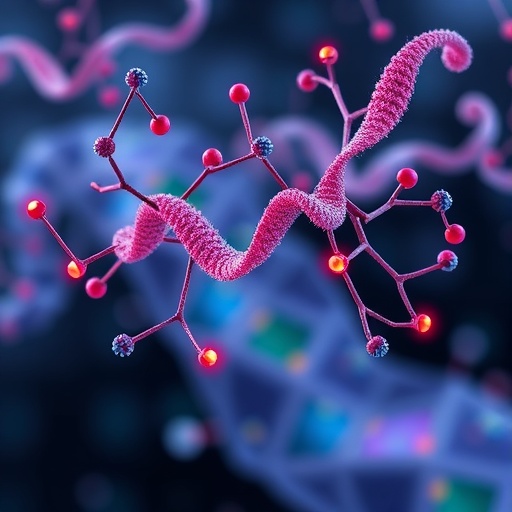Genomes are fundamental in unlocking the mysteries of life’s evolutionary history, offering insight into the sequences and mutations that define species divergence. Although contemporary genomic methodologies are technologically advanced, scientists grapple with accurately reconstructing evolutionary events spanning hundreds of millions of years. A recent groundbreaking study published in Current Biology by a team from the Okinawa Institute of Science and Technology (OIST) introduces an innovative method that utilizes ‘jumping genes’ to unravel the termite evolutionary tree, providing a fresh perspective for researchers tackling age-old puzzles in evolutionary biology.
Professor Thomas Bourguignon, a prominent figure in the study and head of the OIST Evolutionary Genomics Unit, emphasizes the pivotal role of phylogenetic trees. These diagrams elucidate the relationships between various organisms, helping researchers understand the origins of modern biodiversity and informing effective conservation strategies. The task of predicting evolutionary patterns across deep historical timelines is complex, as phylogenetic signals are often feeble, particularly during rapid radiation events where species diversify swiftly within short timeframes. Bourguignon’s team has developed a method that aims to empower researchers to navigate these challenges and enhance the understanding of lineage divergence.
Central to the research are transposable elements, commonly referred to as ‘transposons.’ These unique DNA sequences possess the remarkable ability to relocate within a genome, instigating mutations and augmenting genetic variability. Transposons are particularly prevalent in the genomes of eukaryotic organisms, which include animals, plants, and fungi. Astonishingly, they constitute up to 50% of human genomes and represent an even larger fraction in other eukaryotic species. Despite their ubiquity, transposons have been overshadowed by more traditional stable DNA markers employed for constructing trees of life. Until recently, characterizing these elements at the genomic level proved arduous due to limitations in sequencing technologies and bioinformatics tools.
Cong Liu, the first author and PhD student at OIST, elaborates on this oversight, marking a significant shift in the focus of phylogenetics. Traditionally, researchers have concentrated on conserved genes, such as those encoding essential proteins common across species. These genes evolve slowly over time, making them useful for analyzing gradual evolutionary changes. However, this slow rate of mutation poses challenges in resolving rapid evolutionary events due to minimal variation among closely related species.
To validate the utility of transposons in constructing phylogenetic trees, the research team engaged in an extensive data collection process, sequencing genomes from 45 termite species and two cockroach species. They ensured a diverse representation of species spanning different families and subfamilies within the insect lineage. The meticulous examination of each genome allowed the identification of nearly 38,000 transposon families across the sampled species, painting a comprehensive picture of genetic diversity.
Employing the presence and absence of transposons across the 47 genomes, the researchers constructed a robust tree of life, revealing the evolutionary timelines of species divergence. Remarkably, their findings exhibited an accuracy comparable to those phylogenetic trees built from extensive alignments of protein marker sequences. This achievement highlights the potential of transposons as invaluable tools in deciphering evolutionary relationships.
A significant challenge in evolutionary genomics lies in dealing with DNA degradation, particularly when analyzing historical specimens, such as those found in museum collections. DNA degrades naturally over time, and this process accelerates in warmer and more humid environments—conditions characteristic of many biodiversity hotspots. Liu notes the frequent difficulty in obtaining pristine genomic data, particularly when transitioning from specimen collection to sequencing. This degradation issue is magnified when dealing with ancient samples, underscoring the need for methodologies capable of extracting meaningful information from fragmented data.
The ability to work with fragmented DNA could yield significant implications for evolutionary studies and biodiversity mapping. As transposons are relatively short sequences, they may be retrievable from degraded DNA samples, allowing researchers to glean insights from historical collections that would otherwise be rendered unusable. This innovation opens doors for future inquiries into evolution and diversity, potentially informing conservation efforts and biodiversity assessments.
While the OIST team is focused on unraveling the mysteries surrounding termite physiology, social structures, and dietary evolution, they aspire for their research to inspire a broader audience. Transposons serve as a complementary avenue to existing phylogenetic techniques, and the researchers hope their findings will motivate others across various fields to explore the wealth of information hidden within these dynamic genetic elements.
The perspective shared by Professor Bourguignon reinforces the significance of adapting methodological approaches in evolutionary genomics. Researchers are continually challenged to innovate and think outside conventional paradigms, and the exploration of transposons may serve as a key turning point in the understanding of World biodiversity and the intricate webs of life’s evolutionary narratives.
In conclusion, the OIST team’s revealing research is not only a landmark in the study of termites, but it challenges foundational concepts within evolutionary biology. Their contribution marks a pivotal shift towards integrating dynamic genetic elements into phylogenetic analyses, ultimately enriching the discourse surrounding evolution, conservation, and our comprehension of life’s complex history. As the scientific community delves deeper into the realm of genetics and evolution, the potential discoveries remain vast, promising to illuminate the intricate dance of life that unfolds across the ages.
Subject of Research: Utilization of transposable elements in constructing phylogenetic trees
Article Title: Robust termite phylogenies built using transposable element composition and insertion events
News Publication Date: 5-Nov-2025
Web References: http://dx.doi.org/10.1016/j.cub.2025.10.019
References: Current Biology
Image Credits: None
Keywords
Genomics, Evolutionary Biology, Phylogenetic Trees, Termites, Transposable Elements, DNA Degradation, Biodiversity, Conservation Strategies, Genetic Variability, Eukaryotes, Molecular Evolution, Historical Specimens.
Tags: conservation strategies based on geneticsdeep evolutionary patterns and signalsgenomic methodologies in evolutionary biologyhistorical timelines in evolutionary researchinnovative methods in phylogeneticsmobile genetic elementsOIST evolutionary genomics studyphylogenetic trees in biodiversityspecies divergence through genomicstermite evolutionary tree analysistransposable elements in evolutionunderstanding lineage divergence through transposons





